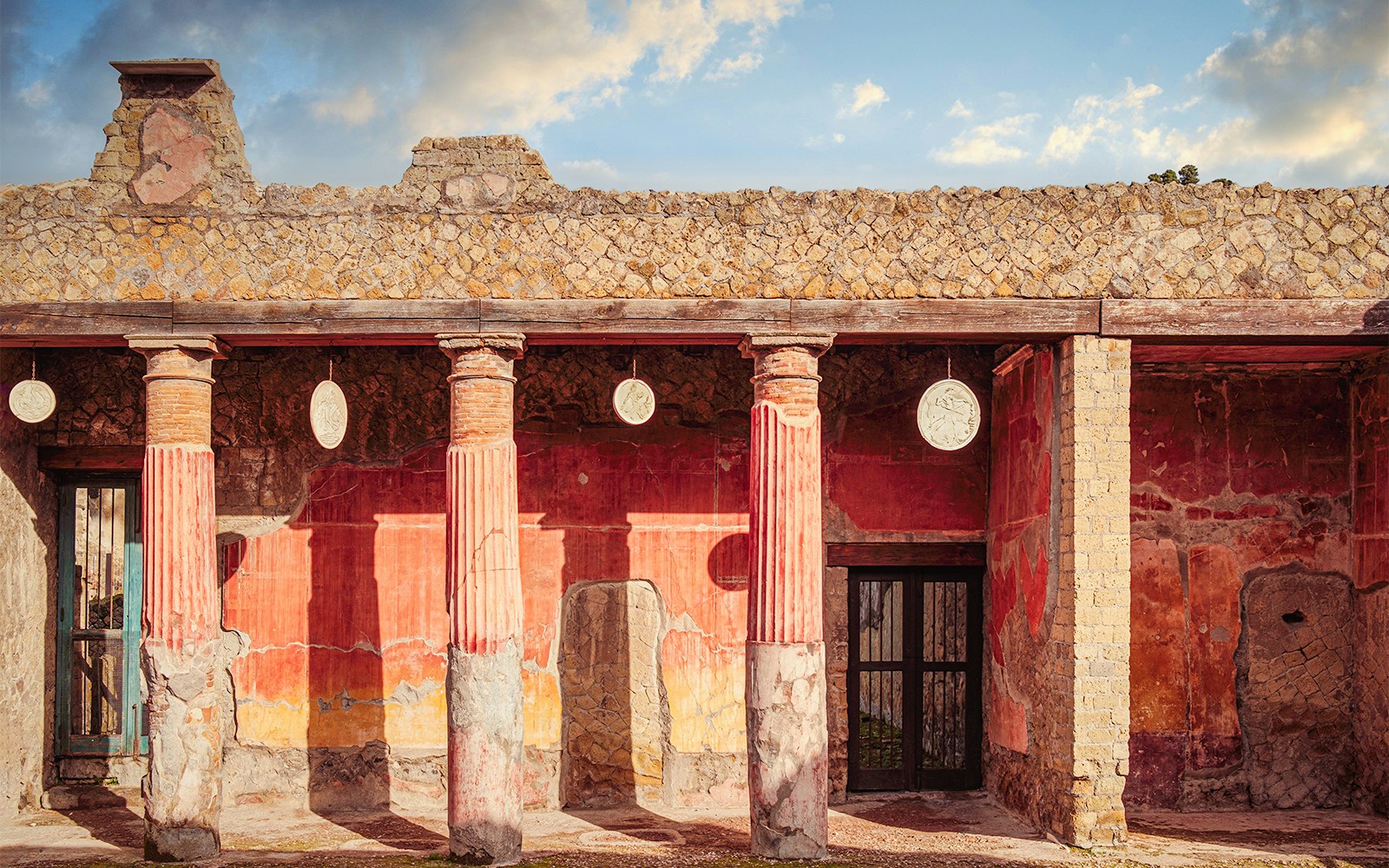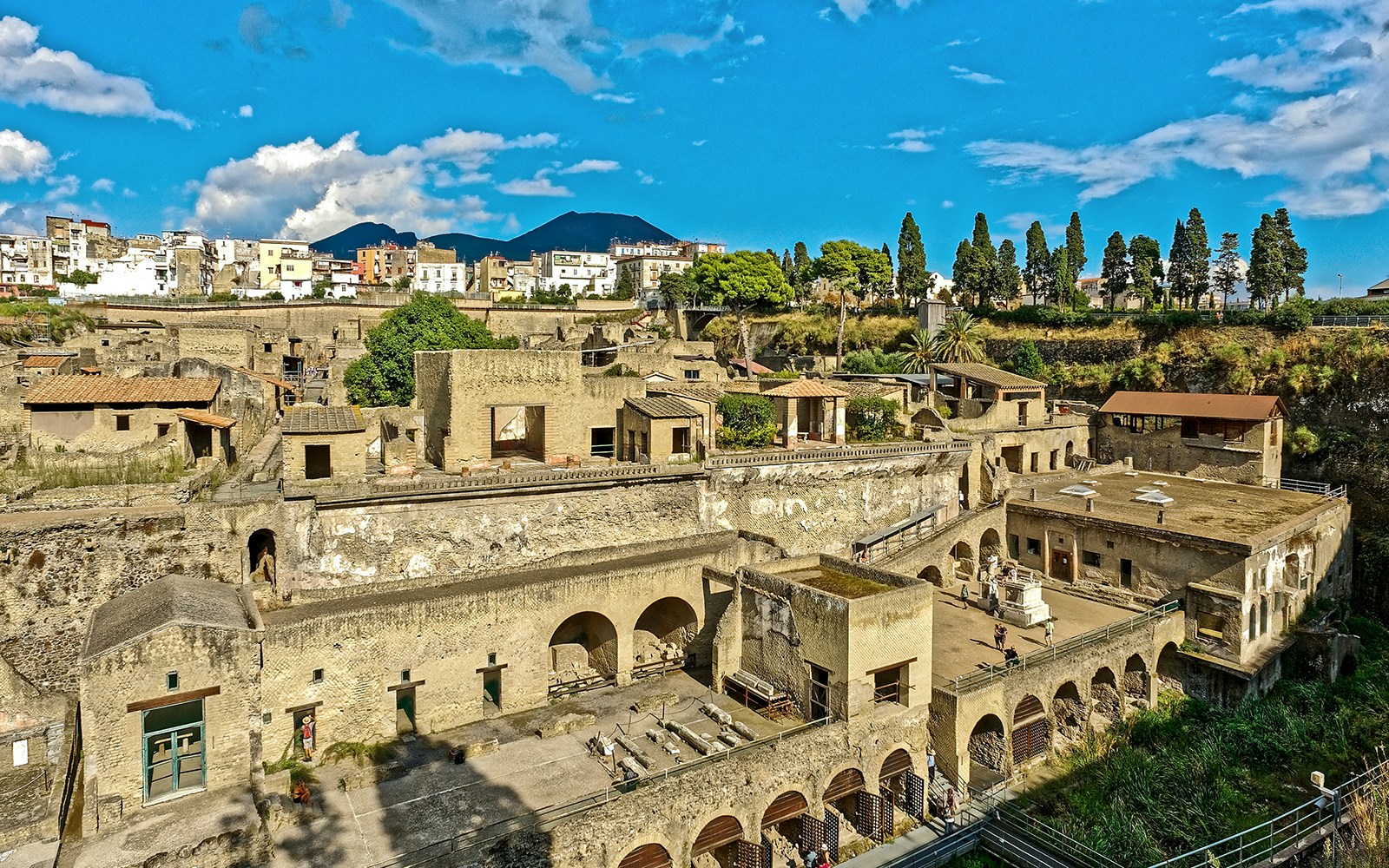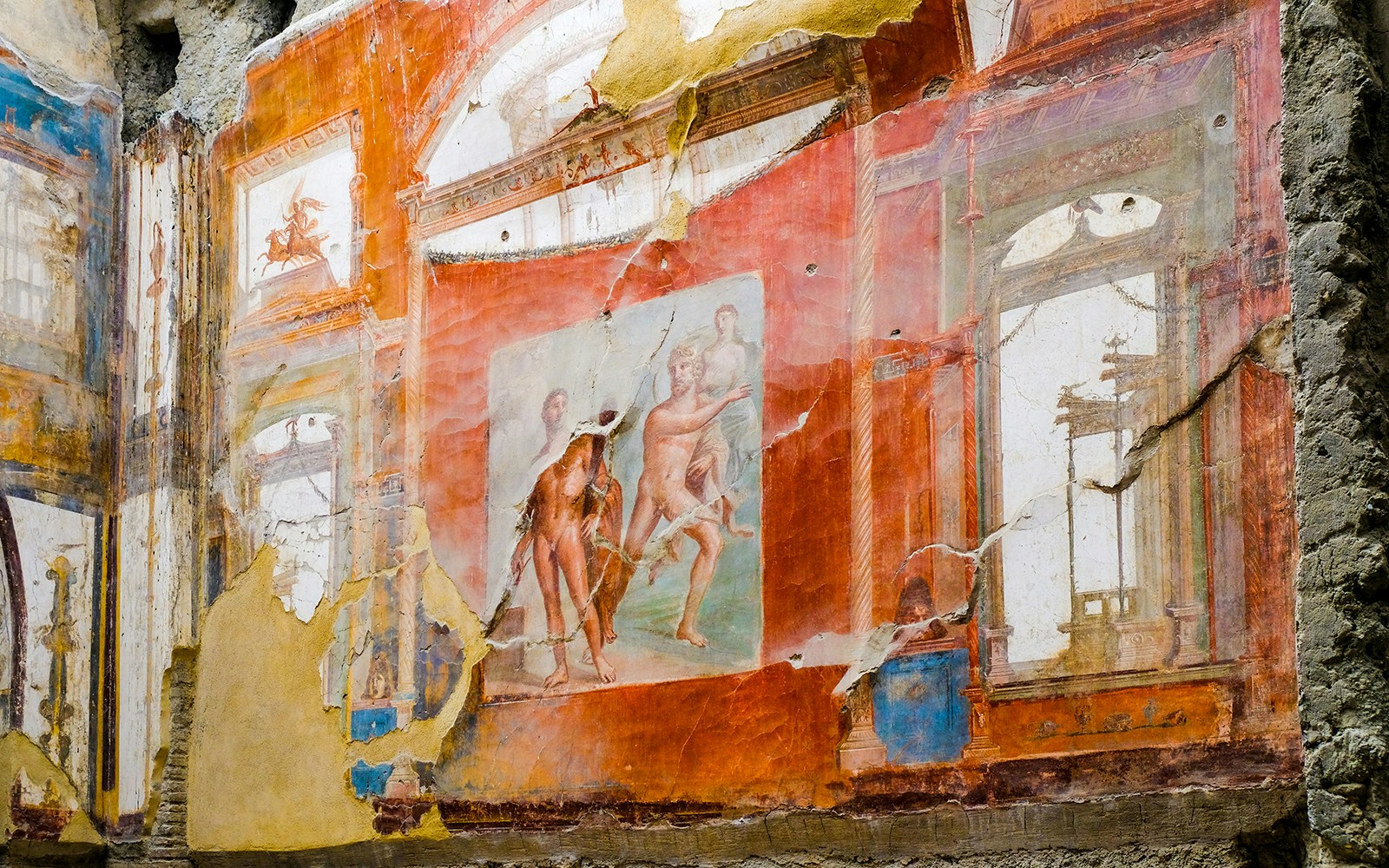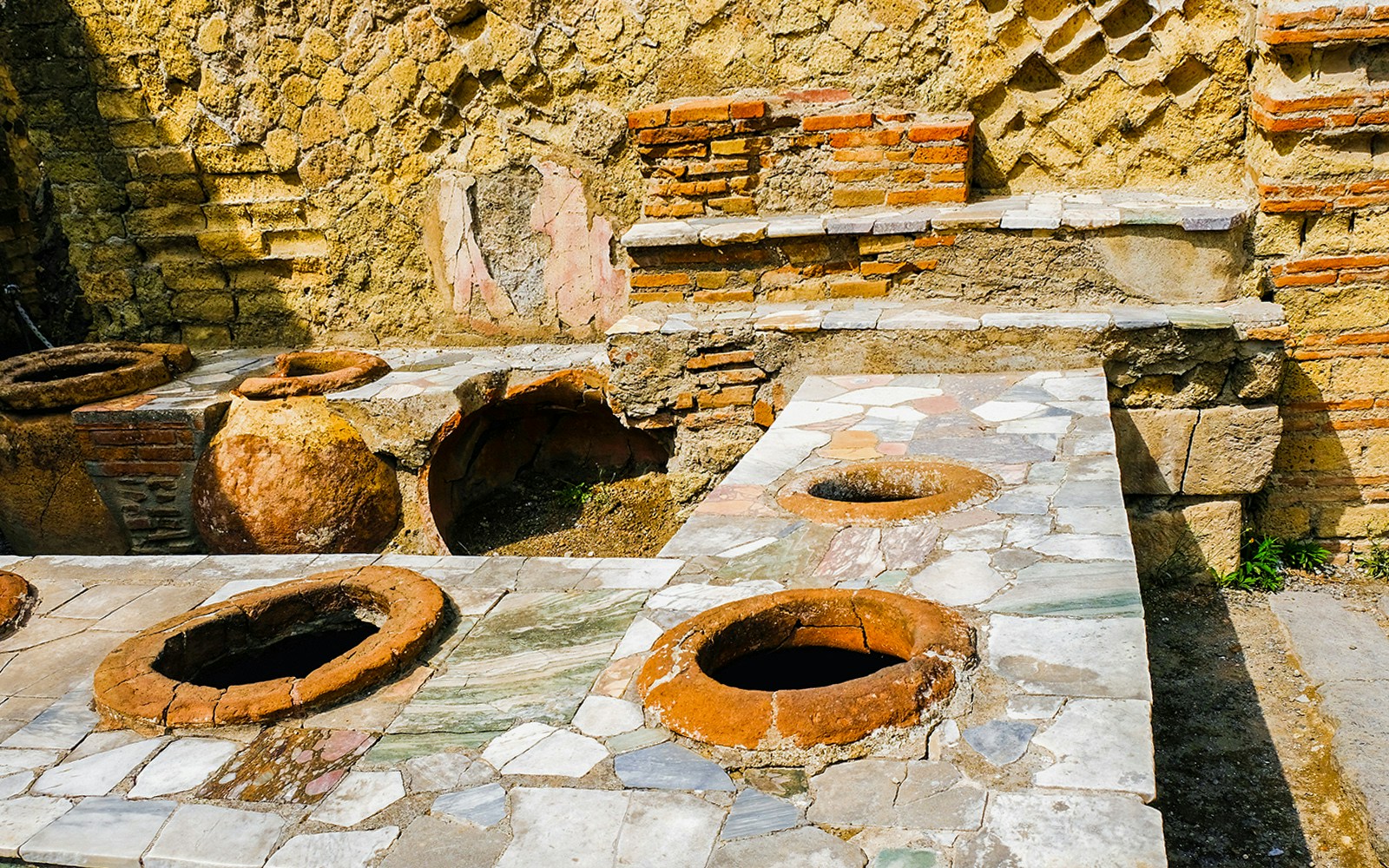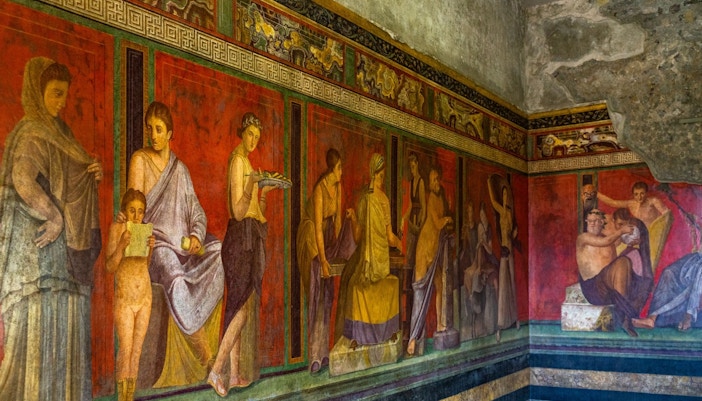A small villa famous for its Neptune and Amphitrite mosaic, crafted in vibrant glass and stone, with its colors and detail remarkably well preserved.
What to see at Herculaneum
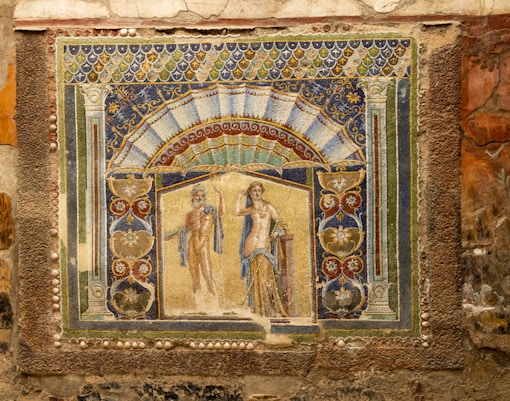
House of the Neptune

Public bath complex
Walk through the town’s bathhouse where heated floors, marble basins, and changing rooms still offer a clear window into how Romans relaxed and socialized every day.
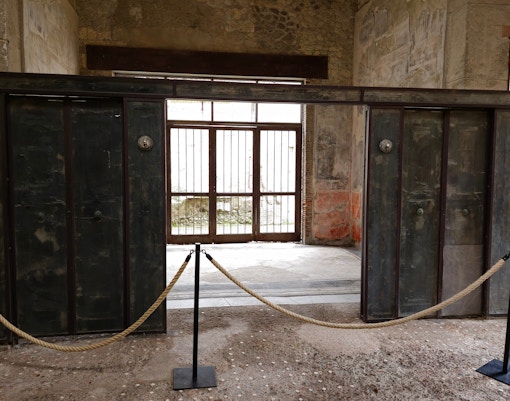
House of the Wooden Partition
One of Herculaneum’s most unique finds, a carbonized wooden sliding door that survived the eruption. It’s a rare example of everyday Roman domestic life preserved in place.
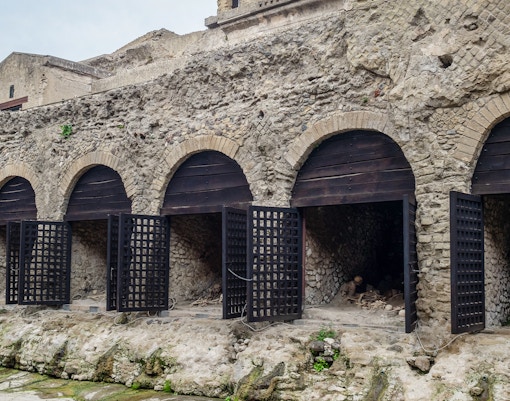
Boathouses
Near the ancient shoreline, the vaulted boat sheds preserve haunting evidence of residents caught during the eruption, a deeply human and emotional highlight of the site.

Samnite House
One of the oldest residences in Herculaneum, showcasing early Italic architecture with a columned atrium and decorative wall painting styles that predate the Roman Imperial period.
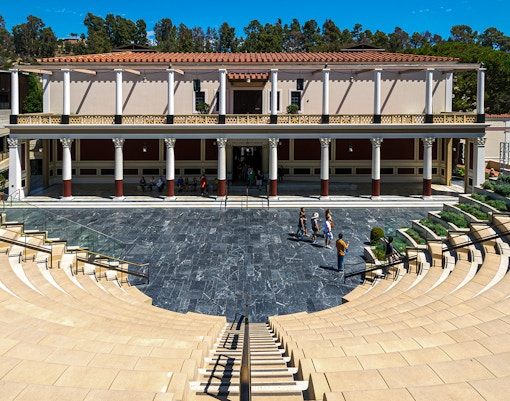
Villa of the Papyri
A grand seaside villa once filled with bronze statues and a unique library of carbonized papyrus scrolls, one of the most important literary finds from the ancient world.

Frescoes and mosaics
Throughout Herculaneum, you’ll find wall paintings and floor mosaics depicting mythological scenes, geometric designs, and vivid colors still in place after nearly two millennia.

College of the Augustales
A ceremonial hall dedicated to the imperial cult, featuring colorful frescoes and inscriptions that offer insight into civic life and the political-religious role of local elites.
